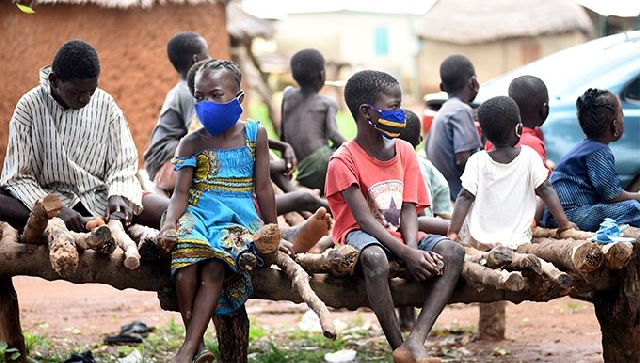Ghana aims to return 10,000 out-of-school children to classrooms by end of 2024
 Children out of school
Children out of school
Ghana's commitment to universal education has taken a significant stride forward as Deputy Minister for Education Rev. John Ntim Fordjour reveals the government is targeting to return some 10,000 out-of-school children to the classroom by the end of 2024.
This initiative marks a pivotal moment in the nation's quest to ensure that every child has access to quality education.
Delivering a keynote address at a program organized by Associates for Change, titled “High-Level Conference on Tackling the Out-of-School Challenge in West Africa: Research Evidence to Drive Action and Investment,” the Deputy Minister highlighted that an alarming 1.2 million Ghanaian children are out of school.
“Last year alone, 3,000 out-of-school children were brought back to school through the Complementary Education Agency (CEA). This year, we are targeting 10,000 children by the close of the year. We also have another programme running, the Ghana Education Outcome Project (GEOP), which is targeting 70,000 children to reintegrate them back into school and give them the skills needed to thrive,” Fordjour said.
The two-day event focused on “Scaling up accelerated education programmes in Africa to tackle the high prevalence of Out of School Children in West Africa.” The Minister noted that this initiative forms part of the government’s resolve to ensure all children of school age have access to education, regardless of their status or condition.
In the last two years, under the functioning of the CEA and GEOP, 17,000 out-of-school children have been reintegrated into schools. Despite the global increase in the number of out-of-school children, the government remains committed to addressing societal and financial challenges to ensure these children remain in school.
“We cannot have a holistic education and be proud of what we have achieved within the Ministry of Education if we don’t tackle out-of-school children,” Fordjour added.
Between 2017 and 2024, the government has built more than 1,132 educational infrastructures, from kindergartens to higher education levels, to improve school enrollment and learning. So far, Ghana has achieved a gross pre-primary enrollment of 100 percent, making it one of the few countries in the world to achieve such a feat.
Dr. James Natia Adam, Research Technical Lead at Associates For Change, urged West African governments to allocate at least five percent of their Gross Domestic Product to address the increasing numbers of out-of-school children in the sub-region.
“When governments in the sub-region increase their investments to support out-of-school initiatives and programmes, it can help address the issues that we are faced with. For instance, if the Government of Ghana adequately supports the CEA, it may also be able to work in partnership with education innovators to carry on with accelerated education programmes to support out-of-school children,” he said.
New UNESCO data shows that 244 million children and youth between the ages of six and 18 worldwide are still out of school, with 40 percent in sub-Saharan Africa.
Source: Classfmonline.com/Zita Okwang
Trending News

Faulty streetlight blamed for fatal accident on Kasoa Highway
16:03
Minority flags election petitions, youth unemployment and third-term agenda as democratic threats
01:07
Togbui Adu Bobi IV urges CMG CEO to invest in Ho FM's annual health walk as hundreds join 6th edition
02:15
NDC extends Christmas and New Year greetings, reaffirms commitment to governance mandate
14:51
PAOG opens dedicated communication lines for Hajj 2026 enquiries
00:55
Dr Opoku accuses Fourth Estate and Sulemana Briamah of misrepresentation in KGL-NLA deal
05:47
Public outcry grows over silence on October 2024 fatal East Legon accident case
13:54
Don't bring back Dr Bawumia - Political Scientist warns NPP delegates
00:28
V/R: Bee attack on Anloga EP Basic School leaves 2 dead
03:14
DVLA suspends rollout of RFID licence plates over legislative delays
12:18




